By the summer of 1942, Japan had strongly consolidated its positions in the Pacific, and the Imperial Japanese Navy had been striving to accomplish two parallel missions: to push the protective barrier farther from their borders, and to obliterate the enemy's fleet in a decisive battle.
The Japanese command saw a chance to fulfill both these missions at once when their attention was caught by the small Midway Atoll. There was a hard-surface aerodrome on the atoll; if the Japanese captured it, they could establish a fine intermediate base on the Americans' doorstep, thus opening up a way to Pearl Harbor.
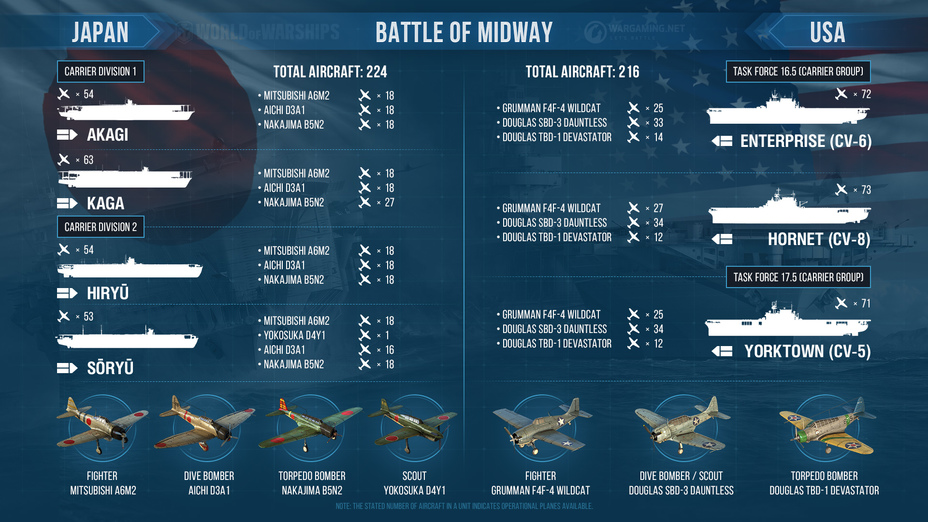
By the end of May, Admiral Yamamoto had thought over his plan several times, and ordered the start of an operation. Task forces were dispatched to sea one after another. The Japanese hoped for a sudden strike and superiority of forces. However, Commander in Chief of the Pacific Fleet, Nimitz, had his own ace in the hole: his code breakers had cracked the Japanese code, and so could decipher a part of Japanese transmissions. Moreover, the Navy HQ were receiving a lot of reports on the movements of Yamamoto's forces, thus adding to the overall picture.
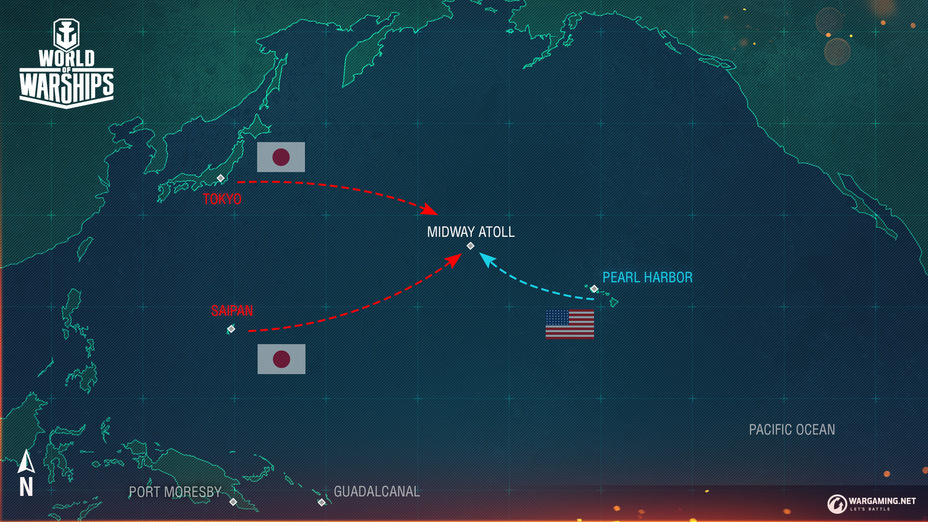
The 1st Air Fleet, headed by Admiral Nagumo, was the primary strike force in the upcoming operation. The squadron’s aircraft carriers—Akagi, Kaga, Hiryū and Sōryū—had already caused a lot of trouble for the allied forces. The Japanese forces stood up to the 16th and 17th task forces with three aircraft carriers, USS Enterprise, USS Hornet, and USS Yorktown, commanded by Admirals Spruance and Fletcher.
The initial contact occurred on June 3, at 9:04 AM local time, when a patrol aircraft detected a Japanese transport squadron 500 miles southwest of Midway. Shortly after, another recon aircraft spotted the main Japanese forces 700 miles west of the island. At noon, 6 heavy B-17 bombers set off to intercept the main Japanese forces; around 4:40 PM the aircraft started to release bombs from high altitude, but scored no hits. At night, four Catalina bombers from the 44th Patrol Squadron used radar readings to strike at a Japanese transport squadron, and managed to damage tanker Akebono Maru with a torpedo.
At predawn dusk on June 4, the aircraft carriers commanded by Nagumo were buzzing with activity to prepare the first aircraft group, which was to destroy all US air forces on the island aerodrome as envisioned by the Japanese commanders. At 4:30 AM, the first aircraft got the green light to take off, and, in just 15 minutes, there were 108 machines in the air. After the first group had executed a combat formation and circled around the aircraft carriers, they set off in the direction of Midway.
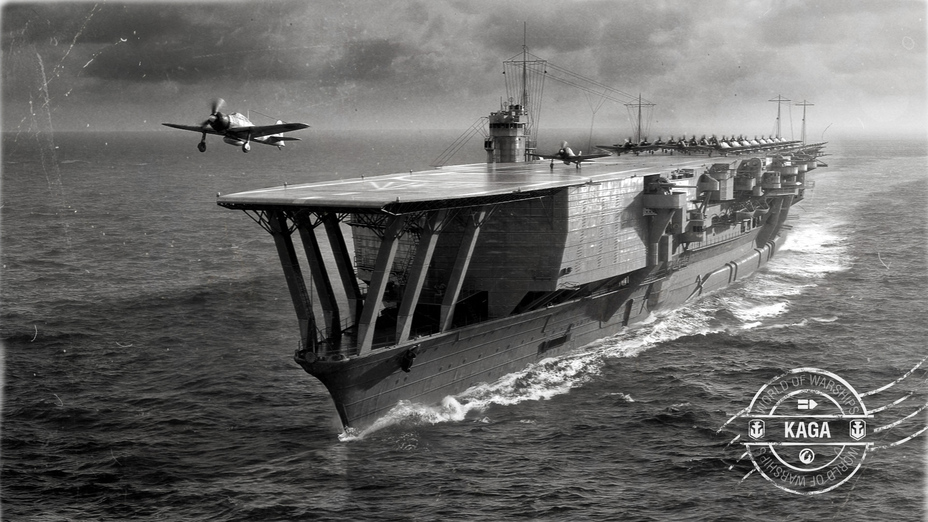
At 5:45 AM, the following message was received from one of the flying boats: «A multitude of aircraft are heading towards Midway, bearing 320, range 150." Without a second thought, the Americans scrambled everything that could fly on Midway, thus protecting aircraft on the ground from danger. An attempt to repel the assault of the Japanese with 27 Marine Corps fighters failed—15 US fighters were shot down and 7 more were damaged. Nonetheless, when the Japanese group approached the aerodrome for a strike, they could barely damage the landing strip and destroyed only a part of the structures. The Japanese mission was almost in vain, and they lost 10 aircraft.
All that time, the Americans had been waiting for a main message regarding the detection of the Imperial Japanese Navy strike force. At 5:52 AM, the following message was received from one of the patrol aircraft: «Two aircraft carriers and main force ships detected, heading 135, speed 25." In a short while, carrier-based aircraft launched multiple strikes on Nagumo's aircraft carrier formation, but none of them turned out to be successful. In turn, the Americans lost 14 airplanes during the raid because they were attacking without fighter support. Around 7:28 AM, a Japanese recon airplane from cruiser Tone established the contact with the American task force. A duel of the aircraft carriers started.
The moment Nagumo discovered the location of the American forces, US aircraft had already been approaching his forces. At the same time, sailors on the Japanese aircraft carriers were preparing the second aircraft group willing to finish off the American air forces on the island aerodrome. Additional fighters took to the air to repel a probable attack. Nagumo had a tough choice to make after receiving the recon reports: either scramble the on-deck bombers prepared for striking Midway, and send them to attack the American forces, or let the first aircraft group land, since they had little fuel left, and then hit the enemy with everything the Japanese had. Nagumo decided not to take any chances and chose the latter, the more reliable option.
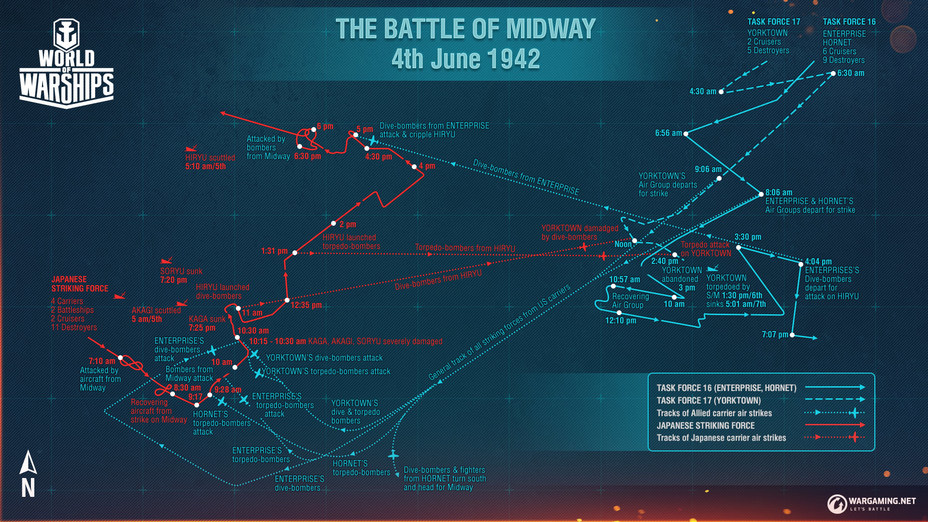
The first US torpedo bombers and fighters to take off lost contact with each other, making the start of the attack on the Japanese forces uncoordinated. Fifteen TBD-1 torpedo bombers from USS Hornet were the first to attack the Japanese aircraft carriers, and a little later, 14 torpedo bombers from USS Enterprise joined the offensive. Without a single support aircraft, they recklessly rushed into their final attack, and only four torpedo bombers survived. The next to come were 12 torpedo bombers from USS Yorktown accompanied by 10 F4F-4 fighters, but their strike turned out to be unsuccessful as well—only two aircraft managed to return to the aircraft carrier. Meanwhile, the Japanese were trying to prepare their task force to attack the American forces, while landing their returning aircraft at the same time. By the time the attacks of the American torpedo bombers had been repelled, 50 dive bombers from USS Enterprise and USS Yorktown came roaring down from the clouds on the Japanese aircraft carriers, totally unaware of their simultaneous strike. The Japanese fighters didn't manage to gain enough altitude to counter the attack, and could only helplessly observe the attack. In five minutes, Dauntless bombers scored hits on Kaga, Sōryū, and Akagi. All three aircraft carriers were doomed: filled fuel lines, fueled airplanes and the arsenal stockpiled on the decks did their job—devastating fires started that led to detonation of ammunition. By the next morning, all three ships were lying on the sea floor.
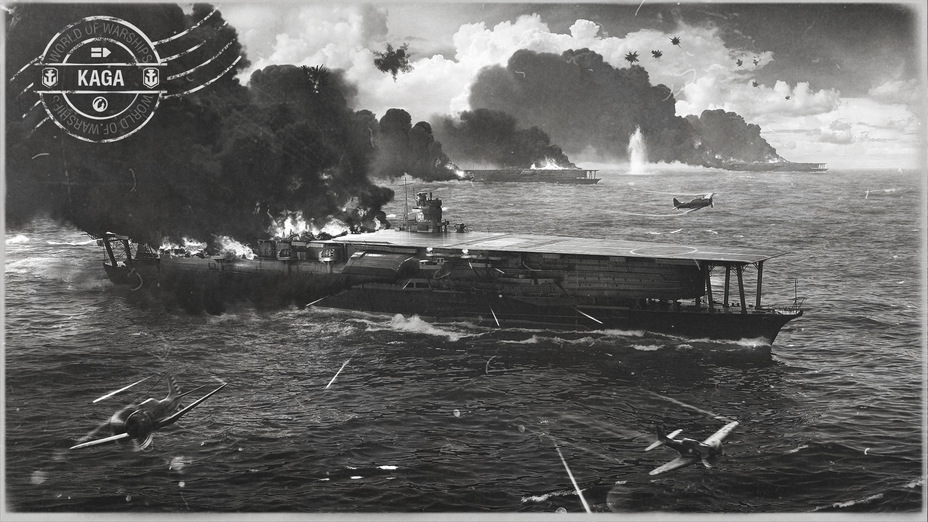
After the flagship Akagi had been taken out of action, Rear Admiral Yamaguchi, the commander of the 2nd Carrier Division, took command of the deck aviation. The only sound ship at his disposal was Hiryū, which had withdrawn from the group to the north to avoid the torpedo attacks. At 10:40 AM, Yamaguchi started to scramble a strike force comprising 18 D3A dive bombers and 6 A6M fighters. Despite the obvious preponderance of forces against the Japanese, he had no other choice. An hour later, a fierce dog fight broke out at the approach to USS Yorktown. Without fear of losses, the Japanese dive bombers scored three hits on the ship. For a while, the aircraft carrier was unable to move, but, by 1:50 PM, repair parties had quickly managed to isolate the fires. The ship started moving at a speed of 19 knots, and continued to accept and launch aircraft. After Yamaguchi had received inconclusive reports from the eight airplanes that returned from the mission, he sent in a second group comprising 10 B5N torpedo bombers and 6 A6M fighters. At 2:26 PM, the air group commanded by Navy Lieutenant Tomonaga engaged enemy support fighters in combat and started to attack USS Yorktown from different directions, resulting in two torpedo hits. The ship's machines stopped, its list started to increase, and by 3:00 PM, the crew had withdrawn from the aircraft carrier to escort ships. Despite the damage received, USS Yorktown remained afloat, and the repair parties returned the next day and tried to save the ship. But fate interfered there one more time: Japanese submarine I-168 attacked the immobilized the aircraft carrier on June 6. USS Yorktown received additional damage and remained afloat for almost 24 hours, before sinking the next morning.
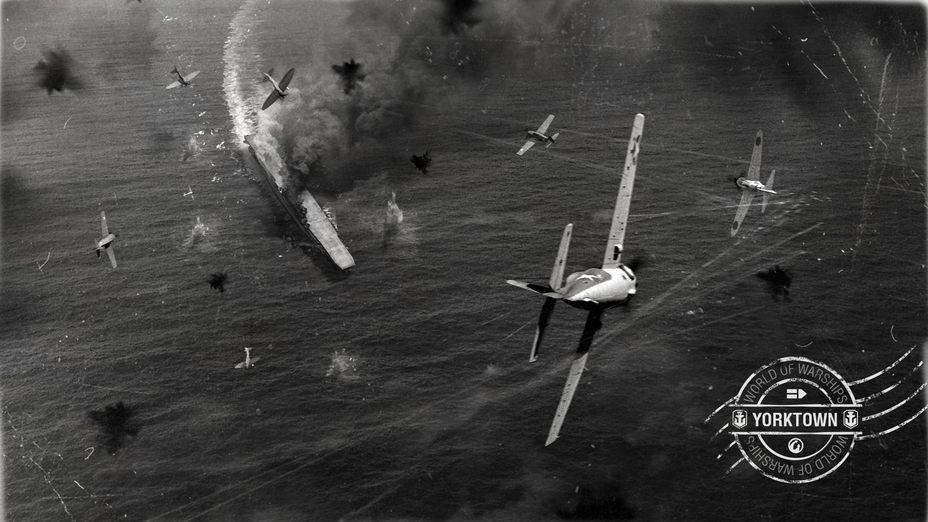
At the same time, recon aircraft from USS Yorktown detected Hiryū, accompanied by a dozen ships including battleships Haruna and Kirishima, 72 miles northwest. Yamaguchi planned to attack the remaining US aircraft carriers at dusk, so the crew had a short break to eat and prepare the aircraft. At 5:03 PM, a shout of a Hiryū's flagman broke the silence: «Enemy dive bombers are right above us!» While the Japanese were preparing for another attack, USS Enterprise and USS Hornet sent in their dive bombers, which had managed to refuel and rearm by that time. The air group from USS Enterprise dropped four bombs onto the fore end of the Japanese aircraft carrier; very powerful explosions followed causing a third of the flight deck to collapse inside the hangars, setting the ship ablaze.
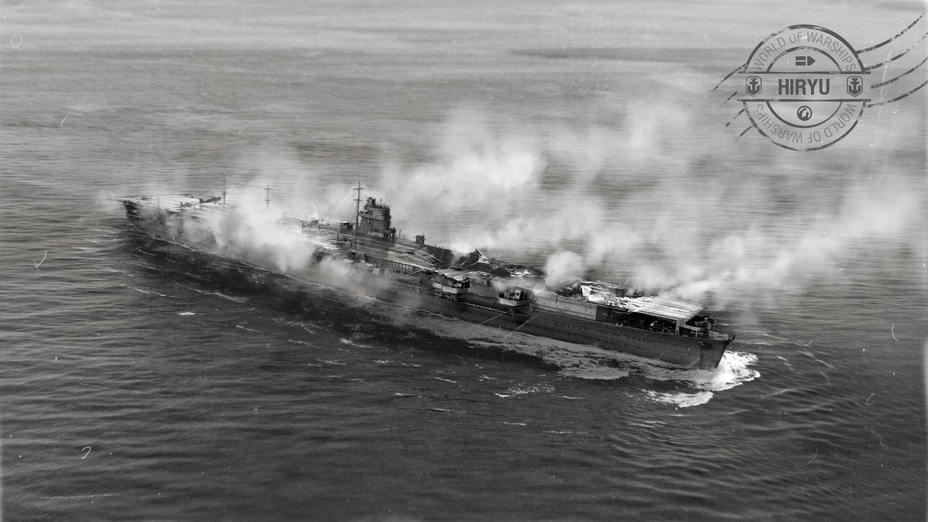
By night, all attempts to extinguish the doomed ship failed. Around 2:50 AM, the remaining members of the crew gathered on the flight deck, where Kaku, the commander of the ship, and then Yamaguchi delivered their farewell speech. Both officers decided to go down with the ship. Escort destroyers approached the aircraft carrier and took the rest of the crew on-board. They then executed the final order of the Admiral—to launch a torpedo salvo at Hiryū at 5:10 AM. Explosions sounded, and the ship began to sink. The carrier remained afloat until 8:20 AM, when she finally sank.
That was a catastrophic defeat for Japan in the Battle of Midway. Japan lost their main strike force—their aircraft carriers—and they had nothing to replace them with. At that time, the Americans were constructing 3 squadron and 9 light aircraft carriers in their shipyards, while the Japanese were constructing just 1 squadron, 1 light, and 1 aircraft carrier, rebuilt from a passenger liner. The Japanese «tsunami» was stopped, the war of attrition started, and the Empire had no chance to win that particular war due to the overwhelming supremacy of the USA, both in terms of resources and industrial power.




